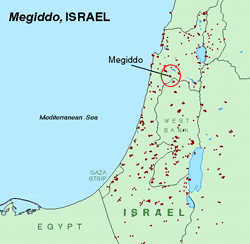|

by Zecharia Sitchin
FATE Magazine - October 2005
from
FateMagazine Website
recovered through
WayBackMachine Website
The warfare and daily carnage in Iraq
have commanded a unique historical, cultural, and religious interest
because the land between the Euphrates and Tigris rivers of
Mesopotamia is where civilization began some 6,000 years ago; it was
there, in
ancient Sumer, that the Garden of Eden was located, where
the Tower of Babylon (“Babel”) was built to reach the heavens, and
where Abraham’s physical and spiritual journey commenced.
With so many biblical links and connotations to the past,
contemporary events also raise the question: Do biblical prophecies
foretell Iraq’s future?
Breaking
Apart to Repeat History?
The conflicted debate concerning the constitution of a post-Saddam
Iraq involves a host of issues, including democracy, religious
freedom, and women’s rights. A core issue that divides the three
main religious/political/ethnic groups is the extent of autonomy
that each will have—the majority Shiites in the south, the
ethnically distinct Kurds in the north (both in oil-producing
regions), and the minority Sunnis in the central region (which
includes Baghdad but no oil). The concern is that the greater the
autonomy, the greater the chances that Iraq will break up into three
parts.
Whether such an outcome is desirable or need be prevented at all
costs can be argued pro and con. The arguments should not ignore the
fact that Iraq is an artificial entity, created after World War I by
Britain and France when they divided the remnants of the Ottoman
(Turkish) Empire. How far back in history should one go in
untangling such ethnic/religious issues?
Saddam Hussein saw himself as a reincarnation of the famed
Babylonian king Nebuchadnezzar and envisioned Iraq as a great New
Babylon. The Shiites of southern Iraq intend to call their
autonomous region or independent state “Sumer.”
With such strong cognizance of the land’s past, some biblical
references to the land’s future seem relevant, too.
The
Biblical Prophecies
The Old Testament prophets Isaiah, Jeremiah, and Ezekiel predicted
the sacking of Jerusalem and its Temple by Nebuchadnezzar, as well
as the subsequent downfall and destruction of Babylon. These
prophecies came true in 586 B.C. and 539 B.C., respectively.
In the New Testament, Babylon and its fate are the main subject of
three chapters in the Book of Revelation (“The Apocalypse of St.
John”). Those prophecies of wrath against Babylon pose a problem for
biblical scholars and theologians: the city of Babylon had been in
ruins for centuries when Revelation was written, having been
forsaken long ago.
Though there is uncertainty and debate regarding the identity of the
author and the exact date of writing, Revelation’s address to of the
seven early Christian churches clearly puts it in the first century
A.D. Most scholars therefore believe that the book was composed
after the persecution of Christians by the Romans had begun, and
that “Babylon” was a code word for Rome.
But if one believes that Revelation is indeed a book of prophecies,
and that it says what it means and means what it says, then “Babylon
of the future” must be a code word for today’s Iraq. And if so, what
Revelation prophesied becomes both intriguing and relevant.
Merchants of Evil
The future fall of Babylon, according to Revelation, will follow and
will be hastened by a period of “harlotry,” during which,
“merchants of the Earth… have
committed fornication with her… and waxed rich through the
abundance of her delicacies.”
(Revelation 18:2.)
Applying this to current events, one can
easily find here an allusion to Iraq’s main “delicacy”—oil—and the
parallel to the Oil for Food program of the
United Nations through
which “merchants of the Earth,” committing ethical and business
“adultery,” enriched themselves while providing the Iraqi dictator
with funds to stay in power and commit more atrocities.
But when the judgments were pronounced upon Babylon, those
beneficiaries of the illicit trade abandoned her and stood aside
when the destruction began:
“The merchants of these things, who
were made rich by her, shall stand far off for fear of her
torment, weeping and wailing, and saying: Alas, alas that great
city that was clothed in fine linen and purple, and scarlet, and
decked with gold.… For in one hour so great riches is come to
naught; And every shipmaster, and all the company in ships, and
as many as trade by sea, stood afar off, and cried when they saw
the smoke and her burning, saying: Alas, alas that great
city…for in one hour is she made desolate.”
(Revelation 18:15–18.)
These ancient verses could read as an
eyewitness report of the aerial bombing of Baghdad.
The
Breakup into Three Parts
Once the destruction of Babylon was so swiftly carried out, the
seventh angel,
“poured out his vial into the air, and there came a
great voice out of the Temple of Heaven, from the throne, saying: IT
IS DONE.
“And the great city was divided into
three parts.… And great Babylon came in remembrance before
God
to give unto her the cup of wine of the fierceness of his
wrath.”
(Revelation 16:17, 19.)
In these chapters of prophecy, the fate
of “Babylon” is linked to and is part of the events that shall come
to a climax with the final battle of Armageddon. The New Testament
makes clear (Revelation 16:16) that the term is a place name “in the
Hebrew tongue” referencing Har-Megiddo, Mount Megiddo, which is part
of the Carmel range in Israel.

click image to
enlarge
As events in Iraq unfold, we will see whether they will follow the
prophetic script to its cataclysmic conclusion.
|

